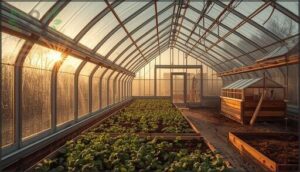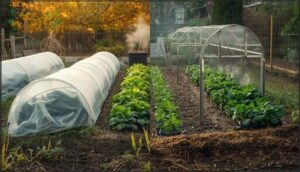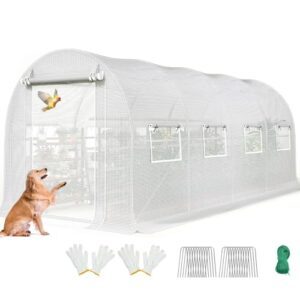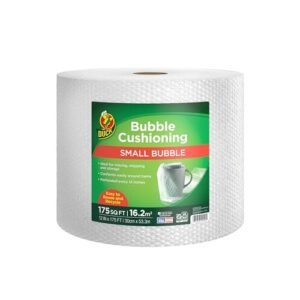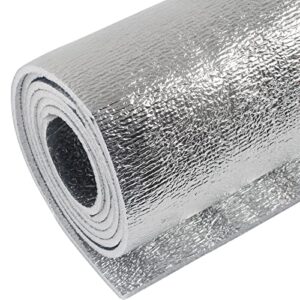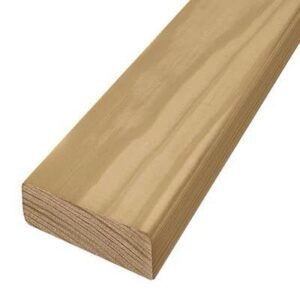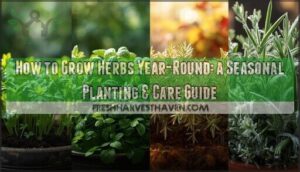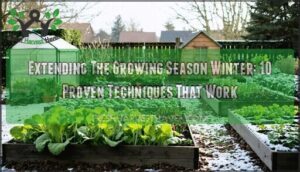This site is supported by our readers. We may earn a commission, at no cost to you, if you purchase through links.
Your garden doesn’t shut down when temperatures drop or soar—it adapts, and so should your protection strategies. Plants face distinct threats in each season: spring frosts that blacken tender shoots, summer heat that wilts established crops, autumn winds that strip leaves prematurely, and winter cold that kills root systems outright.
The difference between thriving plants and total loss often comes down to installing the right infrastructure before stress arrives, not scrambling after damage appears. Whether you’re extending your harvest window with cold frames, shielding delicate perennials from temperature extremes, or creating microclimates that defy your hardiness zone, seasonal plant protection requires matching specific techniques to your local climate patterns and crop requirements.
Success hinges on understanding which methods work for your situation and implementing them with proper timing.
Table Of Contents
- Key Takeaways
- Planning Seasonal Plant Protection Strategies
- Essential Infrastructure for Year-Round Protection
- Season-Extending Techniques for Gardeners
- Seasonal Plant Care and Maintenance Tips
- Top 10 Products for Seasonal Plant Protection
- 1. Mini Wooden Greenhouse Cold Frame
- 2. Agfabric Plant Covers Freeze Protection Row
- 3. Premium Outdoor Greenhouse Kit
- 4. Beach Windscreen Privacy Windbreak Blue Stripes
- 5. Duck Brand Small Bubble Cushioning Wrap
- 6. Halero Reflective Foam Insulation Radiant Barrier
- 7. Twin Wall Polycarbonate Greenhouse Replacement Panels
- 8. Durable Garden Netting Plant Cover
- 9. Clear Greenhouse Film Heavy Duty Plastic
- 10. Pressure Treated Lumber 2x4x2 Outdoor
- Frequently Asked Questions (FAQs)
- Conclusion
Key Takeaways
- Match your protective infrastructure to local climate threats and install it before seasonal stress arrives, not after damage appears, since preventative measures consistently outperform reactive fixes in extending harvests and reducing crop losses.
- Strategic timing separates success from failure—deploy row covers one day before forecasted freezes, start sprinkler frost protection at 0°C, and schedule shade nets only during peak heat periods to avoid yield reductions from excessive shading.
- Cost-benefit analysis proves that investments in season-extending structures pay off when you match technology to crop value, with high tunnels delivering 50% tomato yield increases and frost mitigation systems showing net present values around €61,870 over six years in commercial orchards.
- Combine multiple protection methods for compound benefits—pair 2–4 inches of mulch (which cuts temperature swings by 8–12°F) with row covers providing 3–8°F frost protection and drip irrigation achieving 90% water efficiency to create resilient microclimates that defy your hardiness zone.
Planning Seasonal Plant Protection Strategies
Protecting your plants through the seasons isn’t something you can wing—it requires a clear plan built on your local conditions, crop selection, and available resources. The difference between thriving harvests and costly losses often comes down to decisions made before the first frost or heat wave arrives.
Seasonal plant protection demands a clear plan built on local conditions—decisions made before the first frost separate thriving harvests from costly losses
Below, you’ll find the key considerations that form the foundation of any effective seasonal protection strategy.
Assessing Local Climate and Crop Needs
Before you build a single windbreak or lay down row cover, you need to understand what your plants are up against. Start by reviewing your local climate data—temperature extremes, rainfall patterns, and your USDA hardiness zone.
Then match those conditions to your crop selection, water needs, and expected pest pressure. Most food crops need a specific annual water amount to thrive.
This groundwork shapes every protection decision ahead, helping you anticipate seasonal extremes rather than simply react to them.
Timing Installation and Maintenance
Once you’ve mapped your climate and crops, ideal scheduling becomes your next priority. Check local frost dates—in zone 5b, that’s mid to late May for your last spring frost and late September through mid-October for fall. Weather monitoring helps you time protective measures precisely.
Here’s how to plan your seasonal garden care and frost protection:
- Install floating row covers at least one day before forecast freezes to prevent harvest delays
- Deploy 1.0–1.5 oz per square yard covers ahead of predicted cold snaps for frost-sensitive crops
- Start sprinkler frost protection at 0°C and maintain through the frost period to avoid evaporative cooling damage
- Schedule shade net installation only during peak summer heat periods to prevent excessive shading and yield loss
- Inspect covers, vents, and irrigation systems before major weather shifts for tears and functional performance
Preventative measures beat reactive fixes. Understanding your area’s average first frost date is essential for proper planning. In strawberry trials, timely row cover installation prevented one to two-week harvest delays compared with unprotected fields.
Resource allocation improves when you plan infrastructure maintenance seasonally—test sprinkler systems before anticipated frost periods, adjust greenhouse vents from near-continuous summer airflow to brief winter openings, and time windbreak construction before your growing season begins. Long-term planning means revisiting your average first and last frost dates annually, since shifting climate patterns alter effective protection windows over time.
Integrating Automation and Monitoring Technologies
You can automate much of your seasonal protection with sensor integration and IoT platforms. Wireless moisture sensors deployed at 10–40 cm depths reduce irrigation errors below 3% volumetric water content, while automated control systems cut water use by 20–30% without sacrificing yields.
Disease forecasting models linked to temperature fluctuations and humidity data let you reduce fungicide applications by up to 50%, timing treatments only when infection risk peaks.
Cost-Benefit Analysis for Infrastructure Investment
Once you’ve mapped sensors and controls, run the numbers on protective infrastructure before you break ground. A cost-benefit analysis of infrastructure comparing net present value across climate zones tells you whether greenhouse payback justifies the outlay. Frost mitigation systems deliver NPVs around €61,870 over six years in orchards, while high-tech greenhouses hit ROI projections of 25–40% yield gains within four to six years when you’re growing premium crops.
Smart ROI projections balance capital and operating costs against loss avoidance:
- Initial build: Commercial greenhouses run $20,000–$50,000 per acre; weatherproof coverings and irrigation costs add another 30–60% for sophisticated controls.
- Energy efficiency: LED upgrades and generator tuning cut power bills by up to 42%, paying back in two to eight years.
- Yield protection: High tunnels boost tomato output roughly 50%, from 5–8 pounds per plant to 8–12 pounds, extending your harvest window by four to six weeks.
- Loss avoidance: A single frost event can swing profit €9,800 per hectare; heaters or micro-sprinklers prevent that hit season after season.
- System comparison: Basic structures suit low-value crops, but automation in seasonal plant protection drives 30–50% labor savings and faster payback for high-value lines.
Calculate benefit–cost ratios above 1.0 and discount future cash flows at 4% to confirm your investment makes sense across multiple growing cycles.
Essential Infrastructure for Year-Round Protection
Protecting plants year-round requires the right physical structures, each designed to address specific environmental challenges. From lightweight covers that shield crops from frost to permanent greenhouses that create stable microclimates, your infrastructure choices directly influence plant survival and productivity.
Let’s examine the core systems that form the backbone of effective seasonal protection.
Protective Covers and Row Cover Designs
Protective covers and row covers act as your front-line defense against seasonal stress, creating favorable microclimates around your plants. You’ll find materials ranging from lightweight spunbonded fabrics to clear polyethylene, each offering distinct advantages in light transmission, temperature regulation, and water conservation.
Heavier fabrics reduce light by 20–40%, while clear plastics maintain over 90% transmission, letting you match cover materials to your crops’ needs. Hoop-supported designs provide more stable temperatures than floating covers and reduce leaf abrasion. UV-stabilized films retain about 85% protection after two years, cutting replacement frequency by roughly 40% compared to non-stabilized options.
Row covers can raise air temperatures by 5–15 °F and soil warmth by 3–6 °F, advancing harvest dates by one to several weeks while reducing irrigation needs through internal condensation. Perforation patterns matter—increasing vent-hole density lowers humidity and fungal disease risk while trading some heat retention for better airflow.
| Cover Type | Key Benefits |
|---|---|
| Clear Polyethylene | Maximum heat gain, 90%+ light transmission, significant degree-day accumulation for warm-season crops |
| Spunbonded Fabric | Moderate temperature boost, frost protection, breathable design reduces condensation and disease pressure |
| Perforated Plastic | Balanced heat retention with ventilation, lower humidity spikes, reduced risk of heat stress above 35 °C |
Building and Maintaining Greenhouses or Cold Frames
Choosing frame materials—galvanized steel lasting 20–30 years, aluminum good for 30, or wood at 5–15—sets the foundation for greenhouses, polytunnels, and cold frames.
Glazing options matter: twin-wall polycarbonate (R-value ~1.7) cuts heat loss nearly in half versus single-pane glass (R ~0.9), reducing your heating bills.
Budget $1–$3 per square foot annually for maintenance schedules, covering cleaning, repairs, and climate control upkeep.
Installing Shade Nets and Windbreaks
Beyond shelter from overhead, you’ll need netting installation and windbreak placement to manage light and wind. Material selection starts with shade percentages—40% for vegetables, 50% for ornamentals—and windbreaks reduce speeds 10–30 times their height.
Here’s how to proceed:
- Select shade netting by crop: 35–50% for most produce
- Position windbreak screens perpendicular to prevailing winds
- Use structural support every 8–10 feet
- Schedule maintenance practices twice yearly
Heating, Irrigation, and Drainage Solutions
Heating accounts for up to 85% of greenhouse energy costs, so you’ll want efficient systems paired with smart irrigation automation.
Drip irrigation cuts water use by roughly 30% while doubling efficiency to 4.6 kg/m³.
Don’t overlook drainage impact—tile systems can double corn yields to 116 bushels per acre by preventing waterlogging, and surface drainage channels stabilize performance across unpredictable seasons.
Season-Extending Techniques for Gardeners
You can stretch your growing season by several months if you use the right techniques at the right time. Cold frames, mulch, row covers, and simple DIY devices each offer different ways to shield plants from frost, wind, and temperature swings.
Here’s how to put these season-extending tools to work in your garden.
Using Cold Frames and Polytunnels
Cold frames and polytunnels act as solar batteries, capturing warmth during the day and buffering your plants against nighttime cold snaps. These protective covers can extend your growing season by 30 to 60 days at each end, transforming your approach to crop selection and overwintering plants.
Key benefits you’ll gain:
- Microclimate control: Daytime temperatures inside can climb 5–10 °C above outdoor air, accelerating photosynthesis and growth
- Frost protection: Structures buffer rapid temperature drops, delaying fall frosts by about 30 days in many regions
- Season extension: Unheated polytunnels support continuous winter harvests of leafy greens when outdoor temps regularly dip below freezing
Effective ventilation strategies prevent overheating—open sidewalls on warm days to avoid temperature spikes exceeding 10 °C above crop limits.
When conducting your cost analysis, consider that while a standard high tunnel runs around $3,000, simple low tunnels cost roughly one-sixth as much per bed yet deliver comparable yields for crops like peppers. You’re not just building a structure; you’re engineering a dependable microclimate that puts control back in your hands.
Applying Mulch for Temperature Regulation
Mulch acts as an insulating blanket that smooths out extreme temperature swings your plants would otherwise face. A well-chosen 2–3 inch layer can lower summer soil temperatures by 8–12°F while keeping winter soil 5–7°F warmer—critical margins for root survival.
| Season | Mulch Effect | Temperature Change | Benefit |
|---|---|---|---|
| Summer | Organic Mulch Benefits cooling | 8–12°F reduction | Prevents root heat stress |
| Winter | Winter Mulch Depth insulation | 5–7°F increase | Frost protection for roots |
| Year-round | Mulch Moisture Retention | 70% less evaporation | Stabilizes soil microclimate |
| Daily | Soil warming moderation | 5–9°F narrower swings | Continuous root growth |
Light-colored straw or wood chips reflect solar radiation for Summer Cooling Mulch in heat-sensitive crops, while darker materials boost heat retention in spring. You’ll want to maintain that 2–4 inch thickness—thinner layers won’t regulate soil temperature effectively, and overly thick mulch restricts oxygen exchange at the root zone.
Row Covers for Frost and Pest Protection
Row covers deliver dual-season value: lightweight garden fabric transmits 85–95% of light while providing 2–6°F of frost protection for your cool-season crops, and insect-exclusion mesh can eliminate pest pressure entirely—one zucchini trial recorded zero whiteflies under covers versus 26 per trap in open plots.
Material Thermal Performance and Pest Exclusion Efficacy both improve when you match fabric weight to your protection goal, though Economic Considerations matter—exclusion systems add roughly $650–$2,140 per acre over conventional pest control.
Simple DIY Devices for Wind and Heat Management
Beyond row covers, you can assemble effective barriers from everyday materials. DIY windbreaks—slatted fences or mesh screens with 40–60% density—cut wind speed up to 50%, sheltering plants seven to nine times the windbreak height downwind.
Shade cloths (30–70%) drop air temperatures 5–22°F under simple frames, while low tunnels and DIY cold frames add 2–4°F of frost protection. Pair them with mulch insulation and thermal mass like water barrels to buffer heat swings overnight.
Seasonal Plant Care and Maintenance Tips
Protecting your plants is only half the battle—maintaining them through each season keeps them healthy and productive year-round.
Regular care practices like pruning, watering, and pest management directly impact how well your plants withstand seasonal stress and disease pressure.
Let’s walk through the essential maintenance techniques that’ll help your garden thrive in every season.
Pruning, Mulching, and Watering Techniques
When you master pruning timing, mulch depth, and watering efficiency together, you discover the integrated effects that drive soil health and plant vigor through every season. Proper seasonal scheduling of these core tasks isn’t just about checking boxes—it’s about creating synergy.
- Prune in spring or autumn to boost fruit set by 68–70%, as demonstrated in recent fruiting crop trials
- Maintain 2–4 inches of mulch to increase soil water storage by 50–80% compared with bare ground
- Use drip irrigation for over 90% watering efficiency versus 50–70% from sprinklers
- Replenish mulch layers in spring and fall to offset natural decomposition and settling
- Schedule deep watering early morning to reduce evaporation and promote strong root development throughout the growing season
Organic Pest and Disease Management
Once you’ve dialed in watering and mulch, you can shift focus to pest and weed control without relying on synthetic chemicals.
Biocontrol effectiveness is striking—global data show it cuts pest numbers by 63% and lifts yields over 60%, matching synthetic options while boosting natural enemies by 43%.
Combine organic pest control methods like neem oil with cultural management practices—rotation and cover crops—to suppress rotational disease, reduce losses, and support sustainable adoption of integrated pest management across all your organic produce.
Garden Cleanup and Tool Maintenance
After organic pest management, your end-of-season garden cleanup and maintenance set the stage for next year’s success. Yard waste makes up roughly 12% of U.S. municipal solid waste—about 35 million tons annually—so composting debris on-site cuts landfill pressure and returns nutrients to your beds.
- Clear spent foliage and fallen leaves to reduce overwintering pest pressure and fungal spores.
- Compost plant debris in dedicated bins or piles, turning regularly to speed decomposition over 90–120 days.
- Clean tool blades with a wire brush and dry thoroughly; rust dulls edges and shortens tool longevity.
- Store steel tools in low-humidity spaces to prevent corrosion and maintain cutting efficiency across seasons.
Top 10 Products for Seasonal Plant Protection
Protecting your plants through the seasons requires the right tools and materials, but the options can feel overwhelming. We’ve gathered ten practical products that address common seasonal challenges, from frost protection to temperature control.
Each option below fulfills a specific purpose in your year-round plant protection strategy.
1. Mini Wooden Greenhouse Cold Frame
When you’re looking to stretch your growing season without breaking the bank, a mini wooden greenhouse cold frame delivers impressive thermal performance at a fraction of the cost of full-size greenhouses.
The frame materials—usually fir paired with twin-wall polycarbonate—combine excellent light transmission (around 80–85%) with solid wind resistance thanks to the low-profile design.
You’ll keep soil temperatures 5–10 °C warmer than ambient air, protecting seedlings and extending harvests three to five weeks on either end of the season. It’s cold protection structures made accessible and affordable.
Best For: Gardeners who want to start seeds earlier in spring, protect tender plants from late frosts, or keep greens growing well into fall without the expense and complexity of a heated greenhouse.
- Extends your growing season by 3–5 weeks in both directions, letting you plant earlier and harvest later without any electric heating costs.
- Lightweight and portable at just 10 pounds, so you can move it around your yard or bring it inside for storage when you’re not using it.
- The slanted polycarbonate top sheds rain naturally while letting in 80–85% of sunlight, creating a warm microclimate that’s 1–2 hardiness zones warmer than outside.
- Some users report the wood frame isn’t super sturdy in high winds and may need extra bracing or stakes to keep it secure.
- Condensation can build up between the polycarbonate panels, and the wood might need sealing or varnish to hold up through multiple seasons.
- The compact 39″ × 25″ size limits how many plants you can fit, so it works better for small-scale seed starting than full vegetable production.
2. Agfabric Plant Covers Freeze Protection Row
With the right row cover, you gain control over frost exposure without building permanent infrastructure. Agfabric’s 0.9 oz per square yard polypropylene frost blanket delivers 3–8 °F of protection—enough to shield tender crops through light freezes—while allowing 30–50% light transmission so plants keep growing underneath.
You can drape it directly over beds or suspend it on low hoops, secure the edges with soil or staples, and reuse it for multiple seasons thanks to UV-stabilized fabric construction. It’s one of the most adaptable frost cloths for season extension.
Best For: Gardeners who need affordable, multi-season frost protection for vegetables and tender crops without investing in rigid cold frames or hoop houses.
- Provides 3–8 °F of frost protection while allowing 30–50% light transmission, so plants continue photosynthesis under cover
- UV-stabilized polypropylene construction supports reuse across multiple growing seasons, lowering cost per use
- Available in widths from 5 ft to 16 ft and lengths up to 1,000 ft, fitting everything from small raised beds to long commercial rows
- Lighter-weight options may tear around sharp edges or corners if not handled carefully during installation
- Requires edge securing with soil, staples, or weights to prevent wind uplift and maintain rated frost protection
- Some users report inconsistent durability, with quality varying between production batches
3. Premium Outdoor Greenhouse Kit
When you need more than a cloth cover, a premium outdoor greenhouse kit steps up to give you year-round climate control and thermal efficiency that hobbyist structures can’t match. Twin-wall polycarbonate panels hold interior temps 15–20 °F warmer than outside air, extending the growing season by months while blocking UV stress.
Galvanized steel frames rated for 55–65 mph winds and snow loads up to 85 lb/ft² deliver kit durability that pays off over 10–15 year warranties.
With the U.S. greenhouse market growing near 8.8% annually, design features like auto-vents, gutter systems, and integrated shelving reflect real user convenience for serious seasonal plant protection.
Best For: Dedicated gardeners who want stable, year-round growing conditions and are ready to invest in a structure that can handle real weather while cutting heating costs.
- Twin-wall polycarbonate insulation keeps temps 15–20 °F warmer inside without extra heat, which stretches your season by months and can boost yields up to 50% versus outdoor beds.
- Engineered frames handle snow loads up to 85 lb/ft² and winds around 55–65 mph, backed by warranties of 10–15 years—way beyond what basic pop-up greenhouses offer.
- Auto-vents, rain gutters, and modular shelving give you hands-off climate control and better use of vertical space, so you spend less time babysitting and more time growing.
- Upfront cost is steep compared to simple hoop houses or plastic covers, which can be a barrier if you’re just testing the waters or working with a tight budget.
- Installation takes more effort than a quick-setup tent—even “fast-assembly” kits with pre-cut panels still demand a few hours and some basic tools.
- Polycarbonate panels can yellow or lose clarity after years of UV exposure, and replacement parts for premium kits aren’t always cheap or easy to source locally.
4. Beach Windscreen Privacy Windbreak Blue Stripes
Wind exposure can stunt root development and strip moisture faster than drought itself, which is why you’ll want to think about windbreaks beyond the garden bed. Protecting plants from weather starts with blocking the invisible thief: moving air.
A Beach Windscreen Privacy Windbreak Blue Stripes—13 feet of microfiber on 40-inch pine poles—delivers portable wind protection that cuts wind chill and shields young transplants from desiccating gusts. At 1.5 kilograms, setup and anchoring take minutes, and the blue-striped aesthetic design options blend function with visual appeal.
Best For: Beachgoers and gardeners who need lightweight, portable wind protection to block sand, reduce wind chill, and shield plants or seating areas from moisture-stealing gusts.
- Lightweight at 1.5 kg with a 13-foot span that sets up quickly using included stakes and mallet, making it easy to transport and deploy anywhere you need wind protection.
- Effectively blocks wind and blowing sand while providing privacy, helping plants retain moisture and giving you a more comfortable microclimate for relaxing outdoors.
- Affordable portable solution with durable pine poles and a carry bag, offering practical wind defense without the permanence or cost of installed barriers.
- Microfiber fabric can feel thin to some users, and the material quality gets mixed feedback compared to heavier-duty polyester windscreens.
- May not hold up in extremely strong or sustained winds, with reports of stakes breaking on first use and the screen shifting in exposed, high-wind conditions.
- At 30 inches high, it’s shorter than some windbreak models that reach 5 feet, which might limit coverage for taller plants or larger seating areas.
5. Duck Brand Small Bubble Cushioning Wrap
When greenhouse heating costs threaten to drain your budget faster than a leaky hose, bubble wrap insulation offers a surprisingly effective solution. Duck Brand Small Bubble Cushioning Wrap provides R-values between 1.0 and 1.1 per layer, reducing heating expenses by up to 35% in cold protection structures.
Installation methods include tape, clips, or staples to glazing surfaces—no electricity required. You’ll appreciate the translucent barrier for seedling protection and frost prevention.
Though operational limitations include humidity buildup and premature sprouting if plants remain wrapped too long during mild conditions.
Best For: Greenhouse owners and gardeners looking to cut heating costs by up to 35% while protecting plants from frost without running up their electric bill.
- Reduces heating expenses significantly—some setups see up to 45% savings in cold months while still letting sunlight through for plant growth.
- Easy to install with basic supplies like tape or clips, and you can reuse it season after season instead of buying new insulation every year.
- Works as a passive system that doesn’t need electricity, making it way cheaper than space heaters or specialized horticultural materials.
- Can cause humidity problems and trigger plants to sprout too early if you leave them wrapped during warmer periods.
- The perforations are sometimes hard to find or tear cleanly, which gets annoying when you’re trying to cut specific sizes.
- Light reduction from the wrap means your plants get scattered sunlight instead of direct rays, which might slow growth for sun-hungry species.
6. Halero Reflective Foam Insulation Radiant Barrier
Reflective foam insulation takes heat management beyond bubble wrap’s passive approach. Halero’s 5mm reflective barrier reflects 95% of radiant energy, delivering system R-values up to R-17 when installed with prescribed air gaps in greenhouses or hoop structures.
The closed-cell polyethylene core resists moisture and mold—critical advantages in humid growing environments where frost damage threatens tender crops.
Documented greenhouse case studies show cooling electricity reductions around 15% during hot seasons, with payback periods near 14 months.
You’ll cut through the 40″×80″ sheets easily, securing them with nails or adhesive to cold protection structures.
Best For: Greenhouse owners and hoop house growers in hot or humid climates who need to cut cooling costs and protect heat-sensitive crops from temperature spikes.
- Reflects 95% of radiant heat and can achieve R-17 system values when installed with air gaps, delivering measurable energy savings around 15% in documented cases.
- The closed-cell foam resists moisture, mold, and fungi—stays effective in humid conditions without degrading like other materials.
- Easy to work with at 40″×80″ sheets, cuts quickly, installs with basic fasteners, and pays for itself in roughly 14 months through lower cooling bills.
- Often ships folded instead of rolled, so you’ll deal with creases and wrinkles that take time to flatten out before installation.
- The aluminum foil layer can peel or separate in some units—quality seems inconsistent based on user reports.
- At 5mm thickness, it’s thinner than premium options, and actual insulation performance varies depending on how you install it and whether you create the necessary air gaps.
7. Twin Wall Polycarbonate Greenhouse Replacement Panels
When heat retention alone isn’t enough, upgrading your greenhouse glazing transforms seasonal protection. Twin wall polycarbonate greenhouse replacement panels deliver 80% light transmission with an R-value near 1.7—much better than single-pane glass.
These shatterproof sheets are 200 times stronger than traditional glazing, surviving hail storms that would shatter conventional materials. At roughly $20–$40 per panel, you’re investing in 10–20 years of reduced heating costs and stable temperatures.
Installation’s straightforward: trim the 4’×2′ sheets to fit your existing frame, and you’ll see lower energy bills within months.
Best For: Greenhouse owners in cold climates who want to cut heating bills while protecting crops from hail and temperature swings without replacing their entire structure.
- Delivers 80% light transmission with an R-value around 1.7, which means better insulation than glass and noticeably lower heating costs in winter.
- About 200 times more impact-resistant than glass, so these panels handle hail, wind-blown debris, and accidental knocks without shattering.
- Lasts 10–20 years with UV protection built in, and at $20–$40 per panel, the upfront cost pays back through energy savings and fewer replacements.
- Some buyers report panels arrive smaller or thinner than expected, so double-check actual dimensions before ordering.
- Lower-end options without UV coating can yellow and lose light transmission in just 3–5 years, cutting their useful life short.
- You’ll need to trim panels to fit most frames, and if your installation isn’t airtight, you lose some of the insulation benefit.
8. Durable Garden Netting Plant Cover
Pest pressure costs growers billions every year, but fine-mesh insect nets offer a non-chemical defense that works. Durable garden netting with 0.8 mm apertures excludes apple maggot, spotted wing drosophila, and other destructive pests while letting sunlight and rain through.
You’ll see marketable yields climb as pest damage drops—netted blackberry plots matched or beat insecticide-treated controls in trials.
UV-stabilized materials last 3–5 seasons, paying for themselves through reduced spray costs and improved crop protection across all growing seasons.
Best For: Growers who want long-term pest protection without relying on chemical sprays, especially for high-value crops like berries, apples, and vegetables where quality matters.
- Blocks destructive pests like apple maggot and spotted wing drosophila while still letting sunlight, rain, and air reach your plants
- Lasts 3–5 seasons with proper care, so you’re not buying new netting every year
- Cuts down on pesticide costs and often boosts marketable yields by reducing pest damage and improving growing conditions
- Needs solid anchoring to stay put in windy conditions—some users report tearing if it’s not secured well
- Can be tough to see through in bright sunlight, which makes checking on plants a bit harder
- May not hold up as long in extreme climates with heavy winds, hail, or intense UV exposure
9. Clear Greenhouse Film Heavy Duty Plastic
When physical barriers aren’t enough, you need a complete envelope. Heavy-duty clear greenhouse film—usually 6-mil polyethylene with UV stabilizers—protects tunnels and cold frames season after season.
You get 82% light transmission for strong growth while anti-drip surfaces prevent condensation from spotting leaves or spreading disease.
Reinforced 12-mil films deliver tear strength around 220 pounds and bursting resistance near 370 psi, standing up to wind, snow, and three to four years of field exposure. This plastic sheeting outperforms thinner covers when frost, humidity, or hail threaten your crops.
Best For: Growers in windy, frost-prone, or humid climates who need a durable, multi-season cover that maintains high light transmission and prevents condensation damage on crops.
- 82% light transmission with anti-drip surface keeps foliage dry and disease pressure low, even in humid tunnels.
- Reinforced 12-mil options deliver 220-pound tear strength and 370 psi burst resistance, handling snow loads and high winds better than thin covers.
- UV-stabilized polyethylene lasts three to four years in the field, reducing replacement costs and downtime.
- The anti-drip hydrophobic layer creates a slightly hazy appearance instead of crystal-clear visibility.
- Single-layer films may not insulate adequately in extreme cold without supplemental heating or double-wall construction.
- Proper tensioning and anchoring are critical—loose installation invites wind damage and shortens service life.
10. Pressure Treated Lumber 2x4x2 Outdoor
Strong frames are essential for holding your seasonal plant protection infrastructure together. Pressure-treated lumber, specifically a 2x4x2 Southern Yellow Pine treated with modern copper-based preservatives, offers resistance to rot, insects, and decay for 20 to 30 years in well-drained applications.
These treatment chemicals provide structural integrity for various uses, from cold-frame boxes to raised-bed corners. However, garden safety remains important: wear gloves when cutting and consider barriers between soil and wood.
At roughly seven to eight dollars per eight-foot board, this cost analysis favors durability. Building cold-weather structures demands essential materials that won’t fail mid-season.
Best For: DIYers building outdoor plant protection frames, raised beds, or cold frames who need affordable rot-resistant lumber that will last decades in typical garden conditions.
- Resists rot, decay, and insects for 20-30 years in well-drained outdoor applications, so your garden structures won’t need constant replacement
- Affordable at around $7-8 per 8-foot board while delivering long-term durability that outlasts untreated wood by years
- Widely available at major home improvement stores in various lengths, making it easy to pick up materials for your project without special ordering
- Requires safety precautions like gloves and masks when cutting due to copper-based preservative treatment that can irritate skin or lungs
- May leach small amounts of treatment chemicals into surrounding soil, which concerns some gardeners growing edibles in direct contact
- Service life drops to 10-20 years in consistently wet conditions and needs proper drainage to hit the longer durability estimates
Frequently Asked Questions (FAQs)
How do seasonal pests affect different plant species?
Different plant species face distinct seasonal threats: aphids and codling moths target spring fruit trees, while nematodes and squash bugs plague summer vegetables.
Evergreen winter pests like pine needle scale damage conifers year-round, demanding specific pest control strategies.
What are signs of cold damage in plants?
When frost strikes, you’ll spot blackened leaf tips and water-soaked tissues that collapse within hours.
Stems crack, buds die, and new growth stalls—clear signals your plants have suffered frostbite from weather extremes threatening plant health.
Can native plants survive without seasonal protection?
Many native plants tolerate local climate extremes and frost without covers or protection, relying on natural hardiness. However, urban stressors, managed landscapes, and novel weather events increasingly challenge even well-adapted species’ survival.
How does humidity impact seasonal plant health?
You’ll notice humidity controls how much water your plants lose through transpiration—too low and they’ll wilt, too high and fungal diseases take hold, especially when seasonal stress compounds the problem.
What emergency steps protect plants from unexpected weather?
When calm skies turn hostile overnight, your best defense is swift action. Frost sprinkler activation, emergency cold protection with frost blankets, rapid shading deployment, and flooding drainage actions, backed by monitoring rapid response systems, safeguard your garden fabric against sudden weather threats.
Conclusion
Here’s the truth: plants protected before stress hits outlast those rescued after damage appears. Your seasonal plant protection investment—whether row covers, cold frames, or automated systems—pays dividends in extended harvests, reduced replanting costs, and thriving perennials that return stronger each year.
Match your infrastructure to your climate’s specific threats, install it ahead of seasonal shifts, and maintain it consistently. Your garden’s resilience doesn’t depend on luck; it depends on preparation that anticipates what’s coming next.
- https://www.global-agriculture.com/global-agriculture/up-to-40-percent-of-global-crop-production-is-lost-due-to-pests-and-diseases-every-year-fao/
- https://apsjournals.apsnet.org/doi/10.1094/PHP-09-24-0087-RS
- https://academic.oup.com/mam/article/29/Supplement_1/56/7228284
- https://pmc.ncbi.nlm.nih.gov/articles/PMC8150874/
- https://www.pnas.org/doi/10.1073/pnas.2203230119



